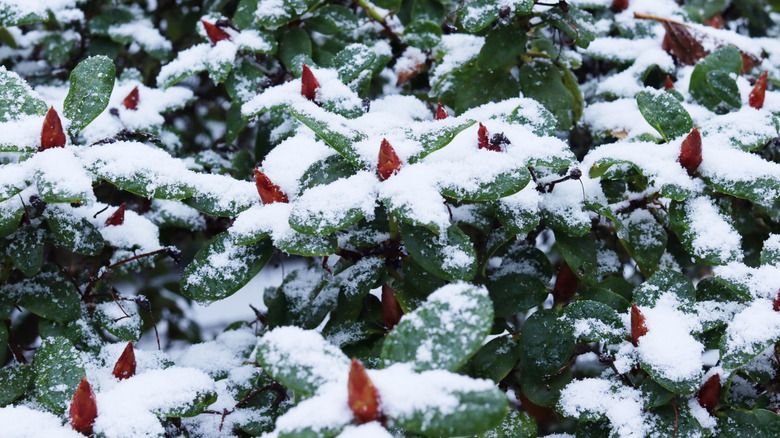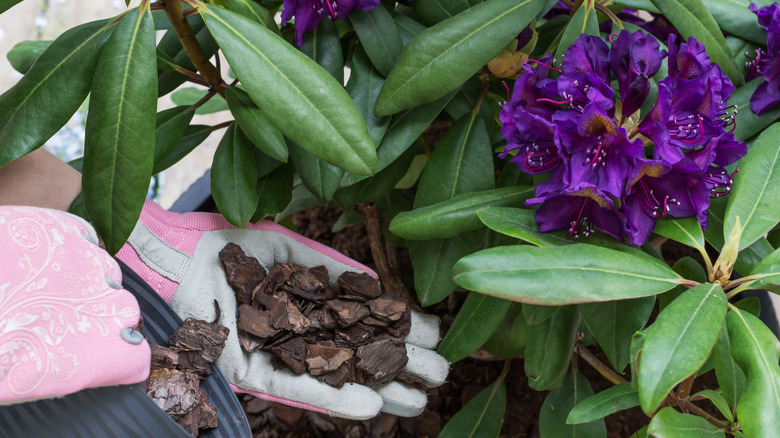The Essential Winter Task To Ensure Beautiful Spring Blooms From Your Azaleas
When their last blooms fade, azaleas (Rhododendron) enter a quiet period that determines how well they'll greet the next spring. These shallow-rooted shrubs rest close to the soil's surface, where changing temperatures and dry winds can take a toll. In USDA Zones 4 to 8, late fall is the ideal time to prepare your plants for winter's freeze-thaw cycles and gusty conditions. Once the soil has cooled and plants are dormant — often by late November, depending on local climate — the most important winter step begins: mulching.
Proper preparation at this stage ensures those vibrant pink, white, or lavender flowers will bloom in early spring gardens. With so many types of azaleas you can grow in your garden, it's important to protect their roots from temperature fluctuations and help them retain moisture during the dormant season. Coarse materials like pine straw, decomposed bark, oak leaves, or peat moss are perfect for winter mulch because they feed the soil as they break down, and you can avoid common mulching mistakes in your garden by using a layer of organic mulch that's just 2 to 3 inches deep.
Winter mulch prevents the repeated thawing and refreezing of the soil that can damage your plant's roots and push your plant upwards. If snow cover is unreliable, materials such as straw or evergreen boughs offer added protection without smothering the plant. Done correctly, this layer guards the crown, prevents bark splitting, and helps azaleas emerge in spring with strong, hydrated roots.
How to keep your azaleas thriving through the cold months
Mulching is the foundation of azalea winter care, but maintaining a balance between moisture, air, and protection is also essential to plant health. Following tips on how to winterize perennials can reward you with decades of flowers, and azaleas are particularly susceptible to too much water in the winter. They thrive in organic, well-drained soil with a slightly acidic pH of 4.5 to 6.0, and their soil should always be evenly moist; never saturated. Give plants a thorough soaking if the weather is dry before the ground freezes so they can go into dormancy well-hydrated.
Once you've got your mulch in place, avoid compacting it or piling it high around the stems of your azaleas, as this can hold too much moisture. If your plant is exposed to an abundance of moisture during winter, this can lead to root rot and even stem rot, which are both conditions you'll want to avoid. As the mulch decomposes during late fall, add fresh mulch around your plants.
For added protection, especially in windy or exposed locations, temporary fences can prevent injury to your plant. Discarded evergreen branches, burlap screens, or snow fencing create effective barriers without trapping too much humidity. If you see the leaves of your azaleas curling or drooping when it's cold outside, this is normal and nothing to worry about. When the warmer weather starts to return in late winter, gently remove any mulch to help new growth emerge.

